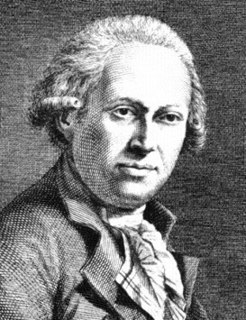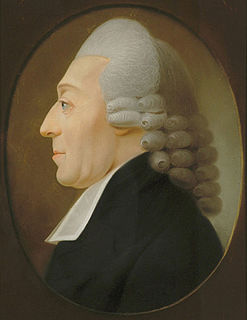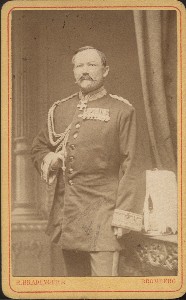
Johann Friedrich Gmelin was a German naturalist, botanist, entomologist, herpetologist, and malacologist.

Johann Christian Polycarp Erxleben was a German naturalist from Quedlinburg.

Gottlieb Conrad Christian Storr was a German physician, chemist, and naturalist.

Franz von Paula Schrank was a German priest, botanist and entomologist.

Johann Wilhelm Meigen was a German entomologist famous for his pioneering work on Diptera.
Johann Nepomuk von Laicharting was an Austrian entomologist. He was born in Innsbruck on 4 February 1754 and died in the same city on 7 May 1797, and was a Professor of Natural Science (Naturgeschichte) in Innsbruck. He described new species and genera of Coleoptera in Verzeichniss und Beschreibung der Tyroler-Insecten. 1. Teil. Kaferartige Insecten. 1. Band. 1781: I-XII, 1-248. - Zurich, bey Johann Casper Fuessly 1781. In English, lists and descriptions of Tyrol insects - beetles. Presumably this was intended to cover all Austrian insects but no further parts were published.

Johann August Ephraim Goeze was a German zoologist, born in Aschersleben. He is known for the discovery of tardigrades, also called water bears. He was the son of Johann Heinrich and Catherine Margarete. He studied theology at University of Halle. He married Leopoldine Maria Keller in 1770, by whom he had four children. In 1751, he became a pastor in Aschersleben, in Quedlinburg, and later of St. Blasius' Church in Quedlinburg in 1762, finally becoming first deacon of the seminary of Quedlinburg in 1787. He died in Quedlinburg.

Xylota is a Holarctic genus of hoverflies similar in structure to the related genera Chalcosyrphus and Brachypalpoides. As the larvae are saprophytic they're usually found in rotting wood. The adult flies are generally associated with woodland and woodland edges and can often be seen running over the upper sides of leaves. Unlike other syrphids the adults of many species rarely visit flowers preferring instead to gather pollen from leaf surfaces. There are over 100 described species of which 12 can be found in Europe. Seven species have been recorded in Britain. Identification of species has been difficult and identifiction by photographs is risky.

Lorenz von Westenrieder was a well-known author and historian in Bavaria and a critic of the Elector Karl Theordor and supporter of Maximilian IV Joseph. There are several memorials to him in Munich.

Zygaena lonicerae, the narrow-bordered five-spot burnet, is a moth of the family Zygaenidae. The species was first described by Theodor Gottlieb von Scheven in 1777.

Johann Samuel Schröter was a German Protestant pastor since 1763, who was also a conchologist, mineralogist and palaeontologist. He was a member of the Academy of Sciences Leopoldina.

Friedrich Christian Carl Heinrich Münter was a German-Danish scholar, theologian, and Bishop of Zealand from 1808 until his death. His name has also been recorded as Friederich Münter.

Friedrich Otto Gustav Quedenfeldt was a German entomologist who specialised in Coleoptera.

Der Naturforscher was a German scientific publication of the Enlightenment devoted to natural history. It was published yearly from 1774 to 1804, by J. J. Gebauers Witwe and Joh. Jac. Gebauer at Halle and edited first by Johann Ernst Immanuel Walch and later by Johann Christian Daniel von Schreber. Both editors were also contributors. Most of the articles concern aspects of invertebrate zoology, mostly entomology and conchology. A few concern ornithology and other subjects, including mineralogy.